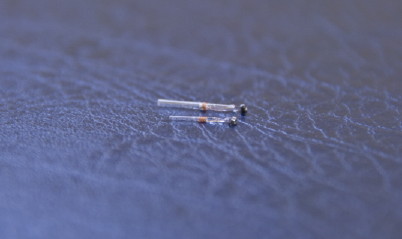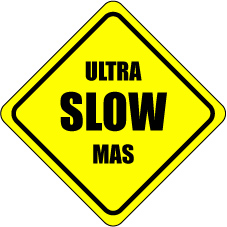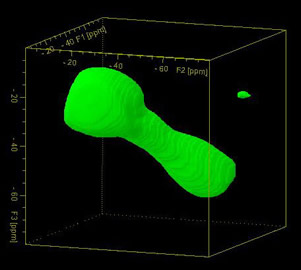High Field
Magic Angle Coil Spinning (MACS) Spectroscopy
 NMR Spectroscopy of very small samples is very difficult using commercial equipment. The situation is even more hard when the sample is anisotropic and spectral resolution comes from sample spinning at the so-called magic angle. A microcoil can be wound around the sample and once tuned at the Larmor frequency, it can establish a wireless connection with the rest of a commercial probe electronics. It can be thus integrated inside the sample holder and spun with it at the magic angle. The solution is scaling favorably with size as long as the quality factor of the microcoil is non-negligable. The photo on the right shows two tuned MACS coils. Their typical dimensions vary from 1 millimeters down to 300 micrometers in outer diameter. We hope that modern lithographic techniques can reduce further their size.
NMR Spectroscopy of very small samples is very difficult using commercial equipment. The situation is even more hard when the sample is anisotropic and spectral resolution comes from sample spinning at the so-called magic angle. A microcoil can be wound around the sample and once tuned at the Larmor frequency, it can establish a wireless connection with the rest of a commercial probe electronics. It can be thus integrated inside the sample holder and spun with it at the magic angle. The solution is scaling favorably with size as long as the quality factor of the microcoil is non-negligable. The photo on the right shows two tuned MACS coils. Their typical dimensions vary from 1 millimeters down to 300 micrometers in outer diameter. We hope that modern lithographic techniques can reduce further their size.
This technology is patented and avalailable for licening through the technology transfer of CEA. For more information please check the official website here.
We are currently applying this approach to study nanomaterials, such as thin films used for the coating of surfaces. This project, named "nanoMACS" is supported by the C'Nano IdF Center of Competence.
Ultra Slow Magic Angle Turning Spectroscopy

Magic Angle Spinning STRAFI Imaging
 The magnetic field away from the center of an NMR or MRI magnet can be extremely inhomogeneous (gradients up to 50 T/m or even higher). This gradient can encode the three space dimensions when the sample is spinning at the magic angle. This means that we do not need pulsed field gradients to obtain spatial encoding and 3D imaging. We are using this approach to acquire 3D images of microscopic samples. Spinning at the magic angle also aleviates anisotropic broadenings such as susceptibilty and/or dipolar couplings and renders the images more sensitive and having a better spatial resolution and definition.
The magnetic field away from the center of an NMR or MRI magnet can be extremely inhomogeneous (gradients up to 50 T/m or even higher). This gradient can encode the three space dimensions when the sample is spinning at the magic angle. This means that we do not need pulsed field gradients to obtain spatial encoding and 3D imaging. We are using this approach to acquire 3D images of microscopic samples. Spinning at the magic angle also aleviates anisotropic broadenings such as susceptibilty and/or dipolar couplings and renders the images more sensitive and having a better spatial resolution and definition.